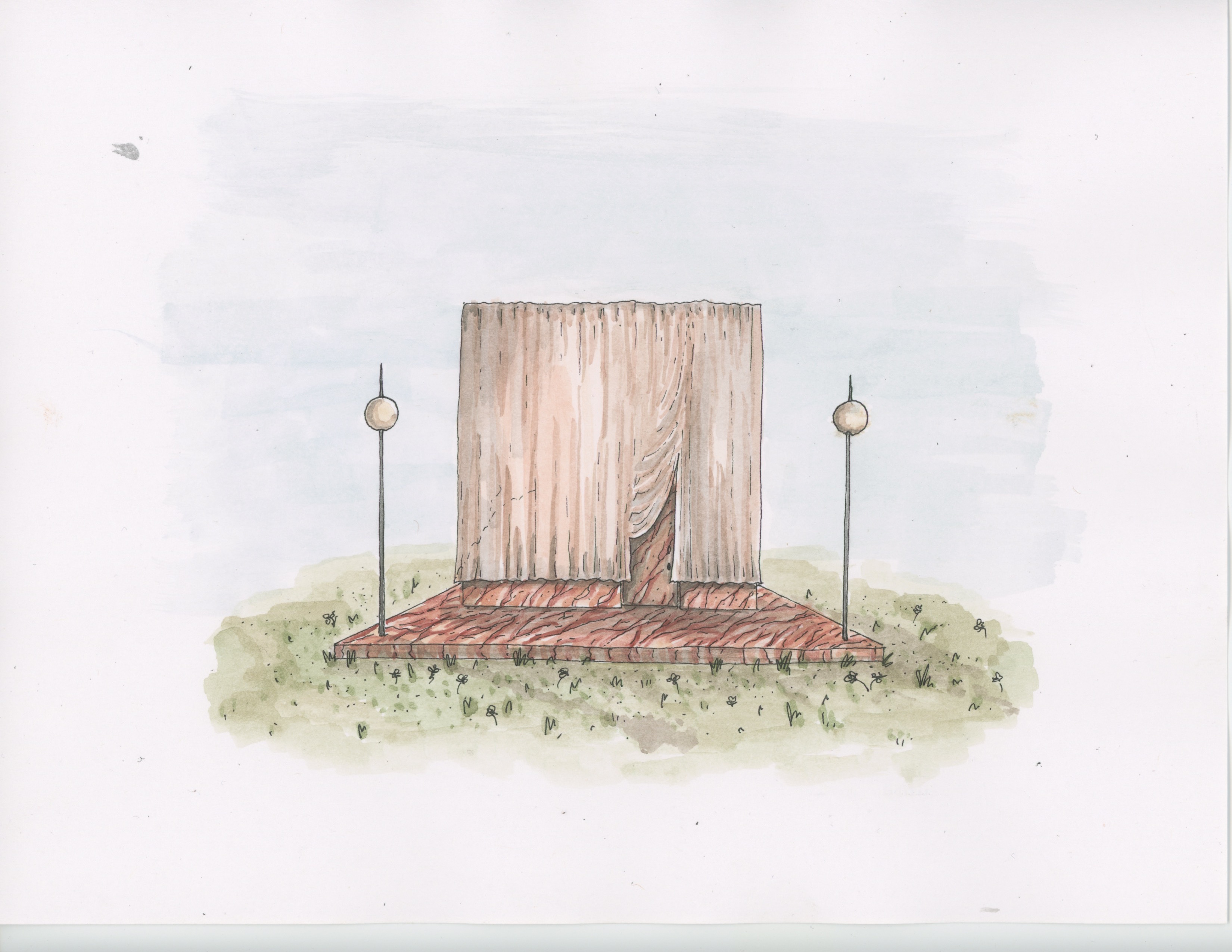
The partners behind Charlap Hyman & Herrero took their dream world to a new level for our Winter 2018 issue creating a set of follies, 18th-century garden pavilions, with their favorite directors in mind. The fantasy begins with Dario Argento.
A Tent Folly for Dario Argento Argento’s tent consists of a faux-painted red marble cube, seamless as if cut from a single impossibly large red marble deposit. An enormous swath of white fabric is draped over the cube and parts perfectly around a portal in the marble. Two gas lamps planted in the terrace flank the hidden structure. 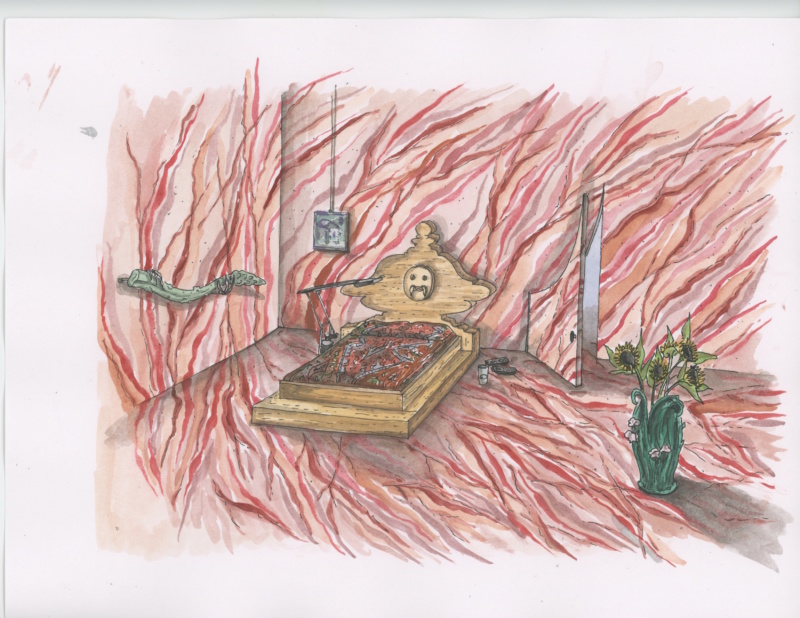 Inside, a contemplative idyll anchored with a 1972 pine bed by Mario Ceroli, a friend of Argento’s and the ex-husband of his second wife, covered in an antique Persian carpet; a painting from Cynthia Talmadge’s Frank E. Campbell series; a silicon asparagus spear sculpture by Hannah Levy; a task lamp by Richard Sapper for Artemide; and an Art Nouveau vase by Ernest Bussière containing an arrangement of sunflowers.
Inside, a contemplative idyll anchored with a 1972 pine bed by Mario Ceroli, a friend of Argento’s and the ex-husband of his second wife, covered in an antique Persian carpet; a painting from Cynthia Talmadge’s Frank E. Campbell series; a silicon asparagus spear sculpture by Hannah Levy; a task lamp by Richard Sapper for Artemide; and an Art Nouveau vase by Ernest Bussière containing an arrangement of sunflowers.
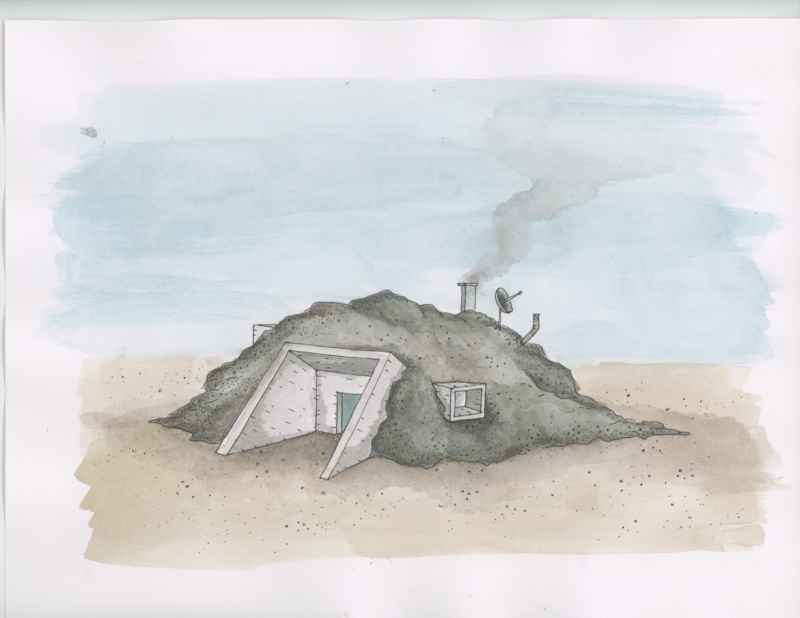 A Grotto Folly for Adam Curtis A seemingly haphazard mound of debris and gravel is punctured by cast concrete windows and doors as well as a chimney and satellite dish. This humble grotto conceals a bunker-like space within.
A Grotto Folly for Adam Curtis A seemingly haphazard mound of debris and gravel is punctured by cast concrete windows and doors as well as a chimney and satellite dish. This humble grotto conceals a bunker-like space within. 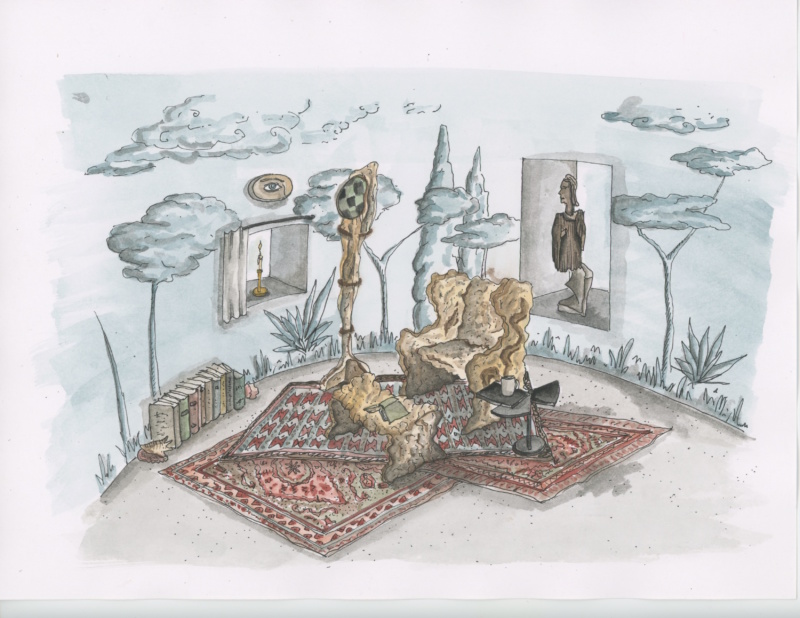 The interior features a lush landscape mural in grisaille, painted by Charlap Hyman and his mother Pilar Almon; her painting of a single eye adorns the wall as well; a chair, ottoman, and standing lamp made from upholstery foam by Jessi Reaves is complemented by a 1929 side table by Pierre Chareau and a collection of antique Afghan rugs; in the windows, Curtis has placed a brass Empire candlestick and a sculpture by Danh Vō; conch shells found near the grotto have been purposed as bookends.
The interior features a lush landscape mural in grisaille, painted by Charlap Hyman and his mother Pilar Almon; her painting of a single eye adorns the wall as well; a chair, ottoman, and standing lamp made from upholstery foam by Jessi Reaves is complemented by a 1929 side table by Pierre Chareau and a collection of antique Afghan rugs; in the windows, Curtis has placed a brass Empire candlestick and a sculpture by Danh Vō; conch shells found near the grotto have been purposed as bookends.
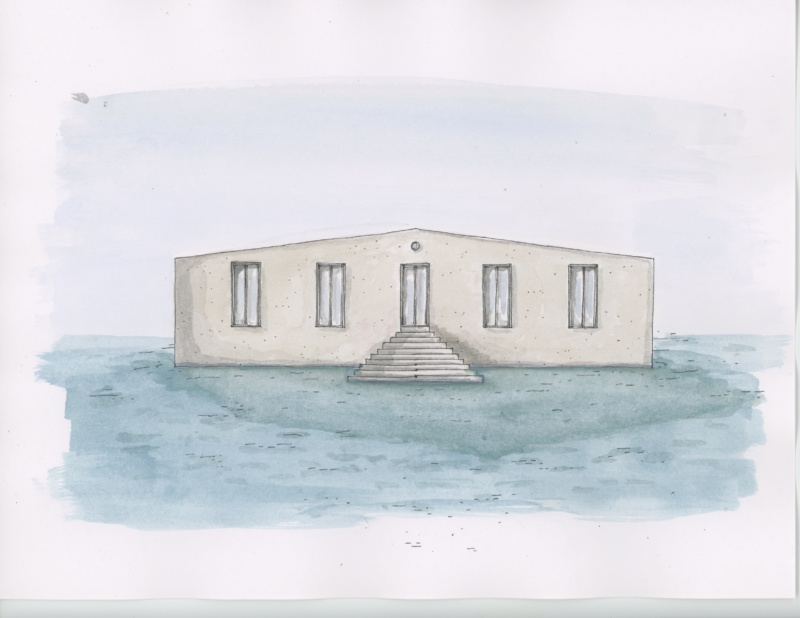 The Island Pavilion for Michael Haneke A severe and gleaming façade of smooth stucco is pierced by a series of French doors. The staircase descends into the generally still water so that the folly can be accessed by boat.
The Island Pavilion for Michael Haneke A severe and gleaming façade of smooth stucco is pierced by a series of French doors. The staircase descends into the generally still water so that the folly can be accessed by boat. 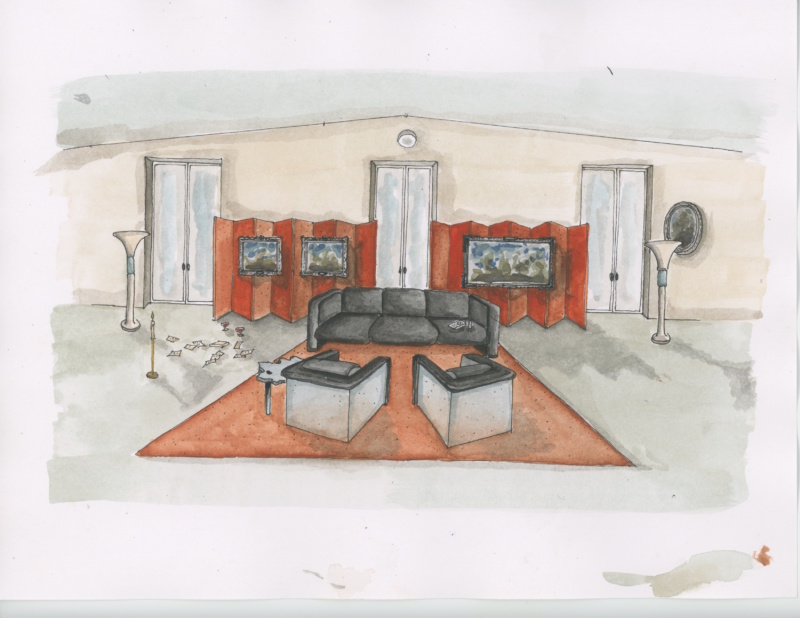 A 1988 mirrored sofa and chair suite by Robert and Trix Haussmann holds court in front of a pair of orange silk-clad folding screen, on which hang 17th-century landscape paintings from the School of Poussin; two standing lamps by BBPR for Kartell flank the room; and an oval still life by Jan van Os hangs in the corner.
A 1988 mirrored sofa and chair suite by Robert and Trix Haussmann holds court in front of a pair of orange silk-clad folding screen, on which hang 17th-century landscape paintings from the School of Poussin; two standing lamps by BBPR for Kartell flank the room; and an oval still life by Jan van Os hangs in the corner.
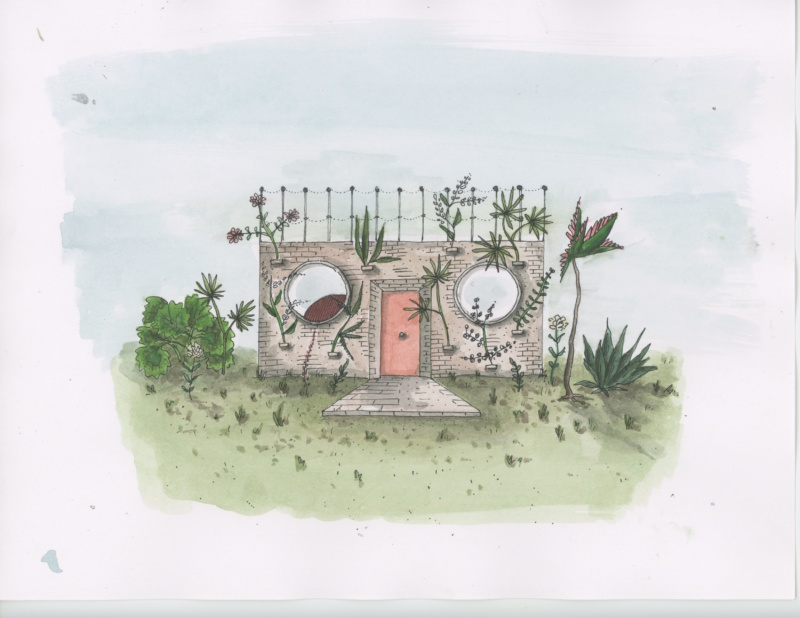 A Garden Pavilion for Agnès Varda A pale brick rectangular structure, set in unkept grass, has a façade that features staggered ledges for plantings and large round windows. A roof deck is accessible from inside.
A Garden Pavilion for Agnès Varda A pale brick rectangular structure, set in unkept grass, has a façade that features staggered ledges for plantings and large round windows. A roof deck is accessible from inside. 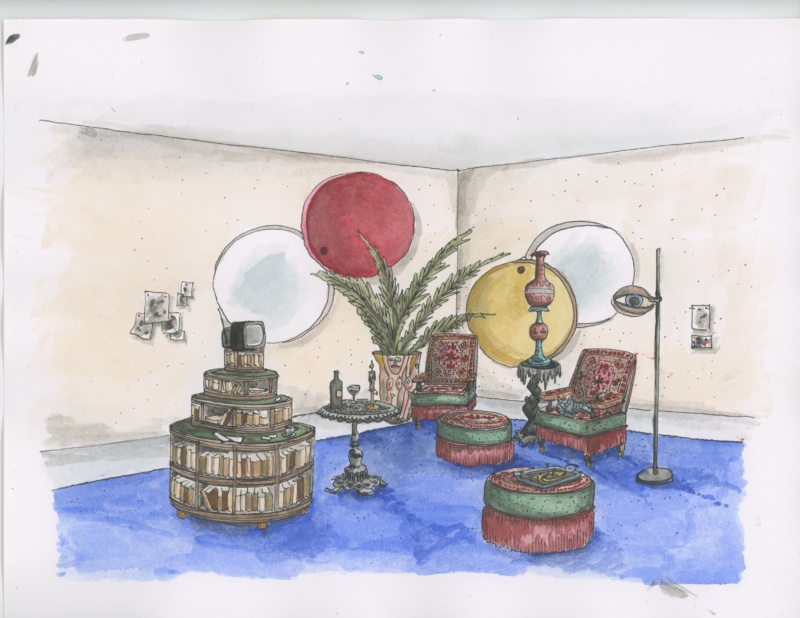 A suite of Orientalist Victorian furniture upholstered in Persian rugs is strewn about a large blue silk rug spanning the interior; an 18th-century grotto pedestal is topped by a Regency oil lamp and a papier-mâché round table inlaid with mother of pearl designs can be pulled up to the chairs when needed; a rotating French étagère holds Varda’s books; the room is enlivened by a potted palm in her vase by Ruby Neri and a 1969 standing eye lamp by Nicola L.
A suite of Orientalist Victorian furniture upholstered in Persian rugs is strewn about a large blue silk rug spanning the interior; an 18th-century grotto pedestal is topped by a Regency oil lamp and a papier-mâché round table inlaid with mother of pearl designs can be pulled up to the chairs when needed; a rotating French étagère holds Varda’s books; the room is enlivened by a potted palm in her vase by Ruby Neri and a 1969 standing eye lamp by Nicola L.
 The Look Out for Lina Wertmüller An organically shaped structure of concrete and stucco presides over a rocky incline. The roof is planted with vines that cascade down through strategically placed openings, and the deck is similarly configured to allow several trees through. Wertmüller keeps a small potted herb garden for cooking and relaxes in her yellow tubular metal Locus Solus armchair set by Gae Aulenti.
The Look Out for Lina Wertmüller An organically shaped structure of concrete and stucco presides over a rocky incline. The roof is planted with vines that cascade down through strategically placed openings, and the deck is similarly configured to allow several trees through. Wertmüller keeps a small potted herb garden for cooking and relaxes in her yellow tubular metal Locus Solus armchair set by Gae Aulenti.  From inside, the landscape is seen through irregularly shaped windows and diaphanous curtains made with antique lace fragments by Bode; a large pillow by Sophie Stone rests on the terra cotta floor near a Brionvega television and a Bonacina bamboo armchair; an 18th-century daybed has been updated with ceramic finials by Katie Stout, who also made the ashtray for Wertmüller; a cast metal stool by Misha Kahn from his balloon series and a Paavo Tynell wicker lamp dot the space.
From inside, the landscape is seen through irregularly shaped windows and diaphanous curtains made with antique lace fragments by Bode; a large pillow by Sophie Stone rests on the terra cotta floor near a Brionvega television and a Bonacina bamboo armchair; an 18th-century daybed has been updated with ceramic finials by Katie Stout, who also made the ashtray for Wertmüller; a cast metal stool by Misha Kahn from his balloon series and a Paavo Tynell wicker lamp dot the space.




